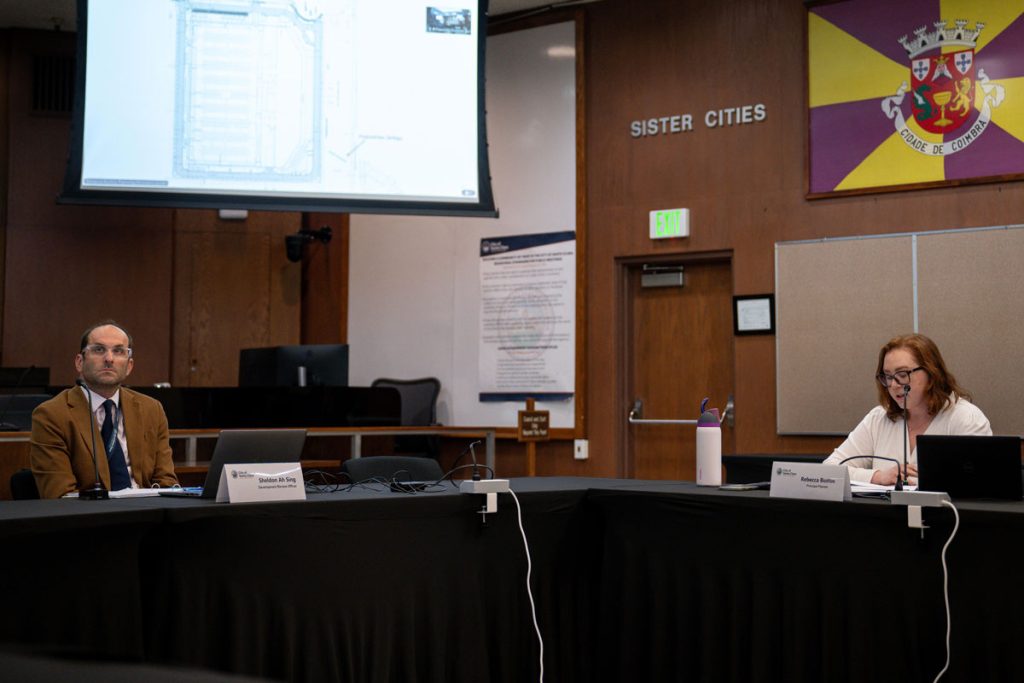
SANTA CLARA — The City of Santa Clara approved NVIDIA’s Phase 3 architectural review at the Development Review Hearing on Oct. 1, paving the way for the next phase of construction in the tech giant’s headquarters expansion.
The approval marks a major step in completing NVIDIA’s long-term plan for its San Tomas Business Park Campus, which was first approved in 2008 for 1.95 million square feet of office and research space across three buildings.
The Phase 3 project, located at 2400 Condensa Street, will add a 345,475-square-foot office building, a 2,737-space parking structure, and a pedestrian bridge across San Tomas Creek to connect with the company’s existing Phase 1 and Phase 2 buildings.
Rebecca Bustos, the city’s principal planner overseeing the project, presented the staff report at the hearing.
“The Phase 3 project would not result in any new impacts or substantially increase the severity of previously identified transportation impacts,” Bustos said.
The original development agreement, approved in 2008, allowed phased construction and has been extended multiple times. Modifications made in 2013 and 2018 adjusted building sizes and deferred construction of the pedestrian bridge to Phase 3.
Phases 1 and 2, known as Endeavor and Voyager, were completed in 2017 and 2022, respectively, and now serve as NVIDIA’s main headquarters and primary office campus.
Phase 3 is being led by design firm Gensler. The new phase continues the architectural language of the first two phases to enhance connectivity and visual identity, according to Eugene Lee, a Senior Associate at Gensler.
Lee said he was pleased to see the architectural review approved but declined to provide additional comments after the hearing.
City staff recommended approval of the architectural review, finding the project consistent with local codes and the long-term development plan. No public opposition was raised during the hearing.
NVIDIA, founded in 1993, is one of the world’s leading technology companies, best known for designing graphics processing units (GPUs) and systems that power artificial intelligence, gaming and data centers. In recent years, the company has become one of the most valuable in the world as demand for AI technology surges.

